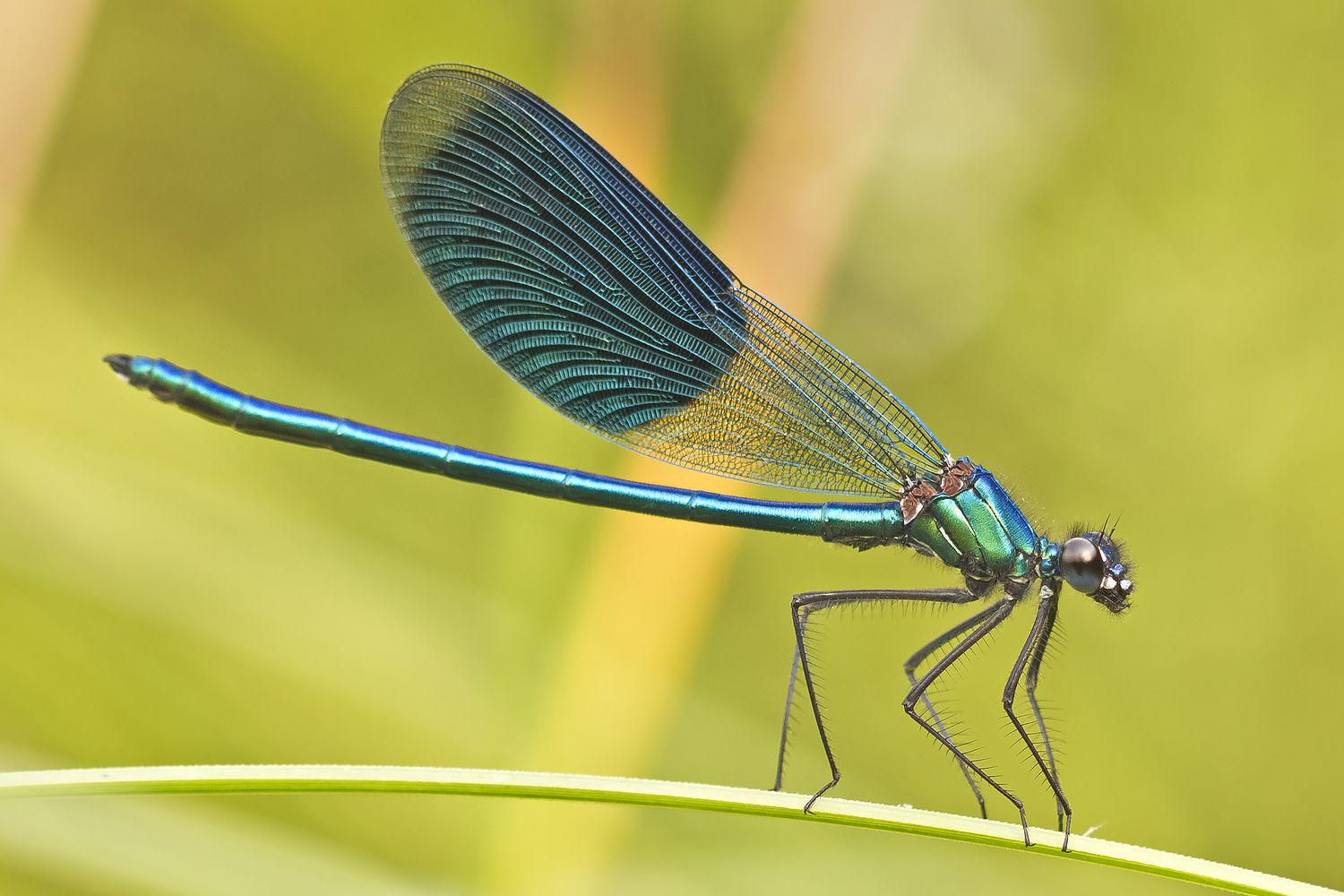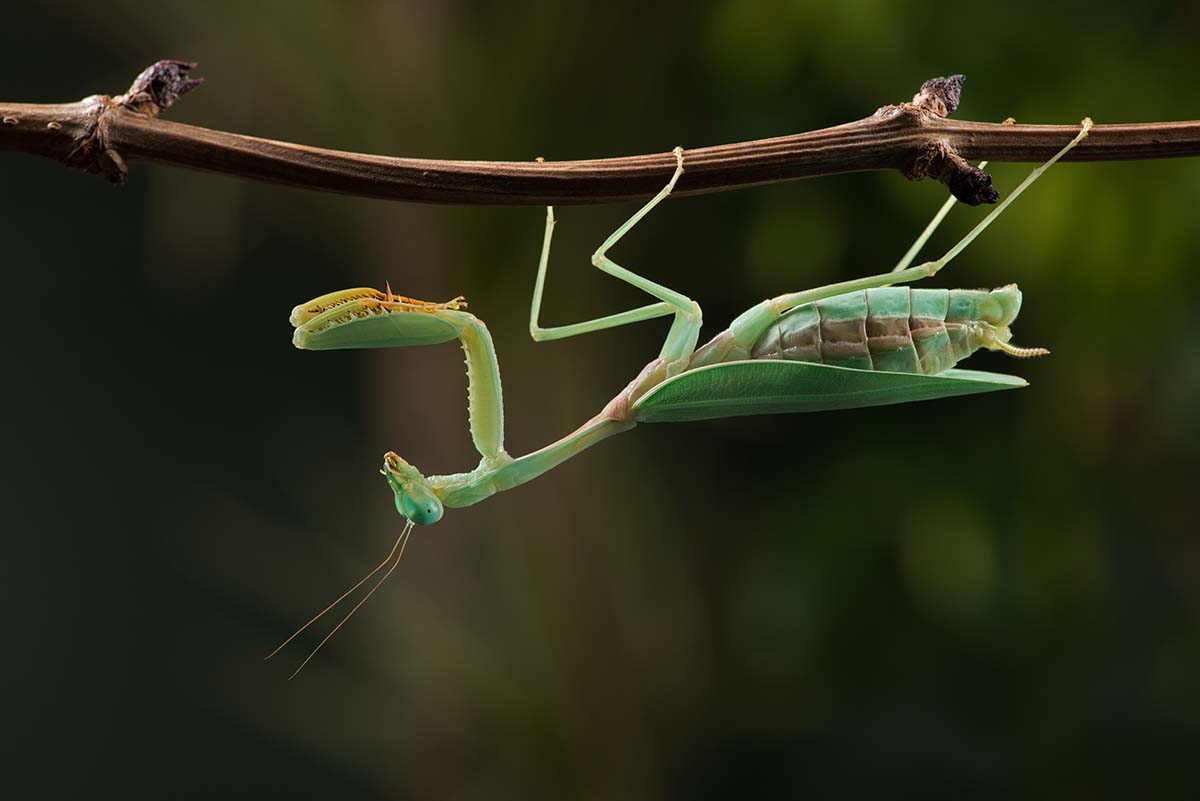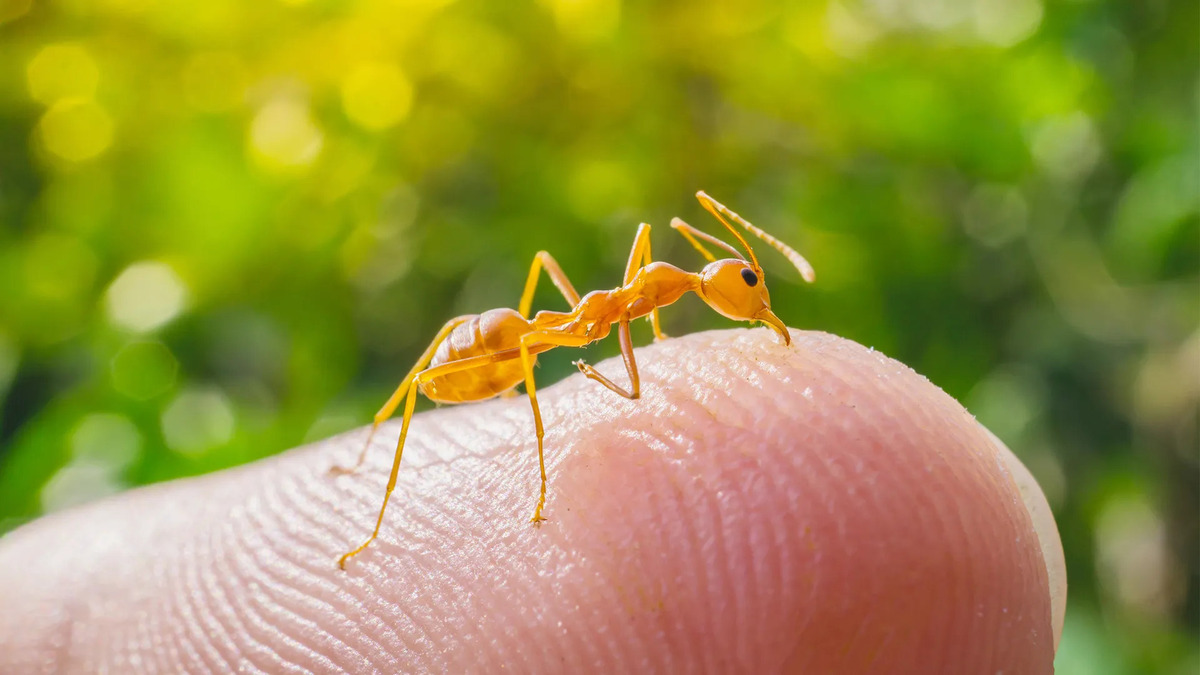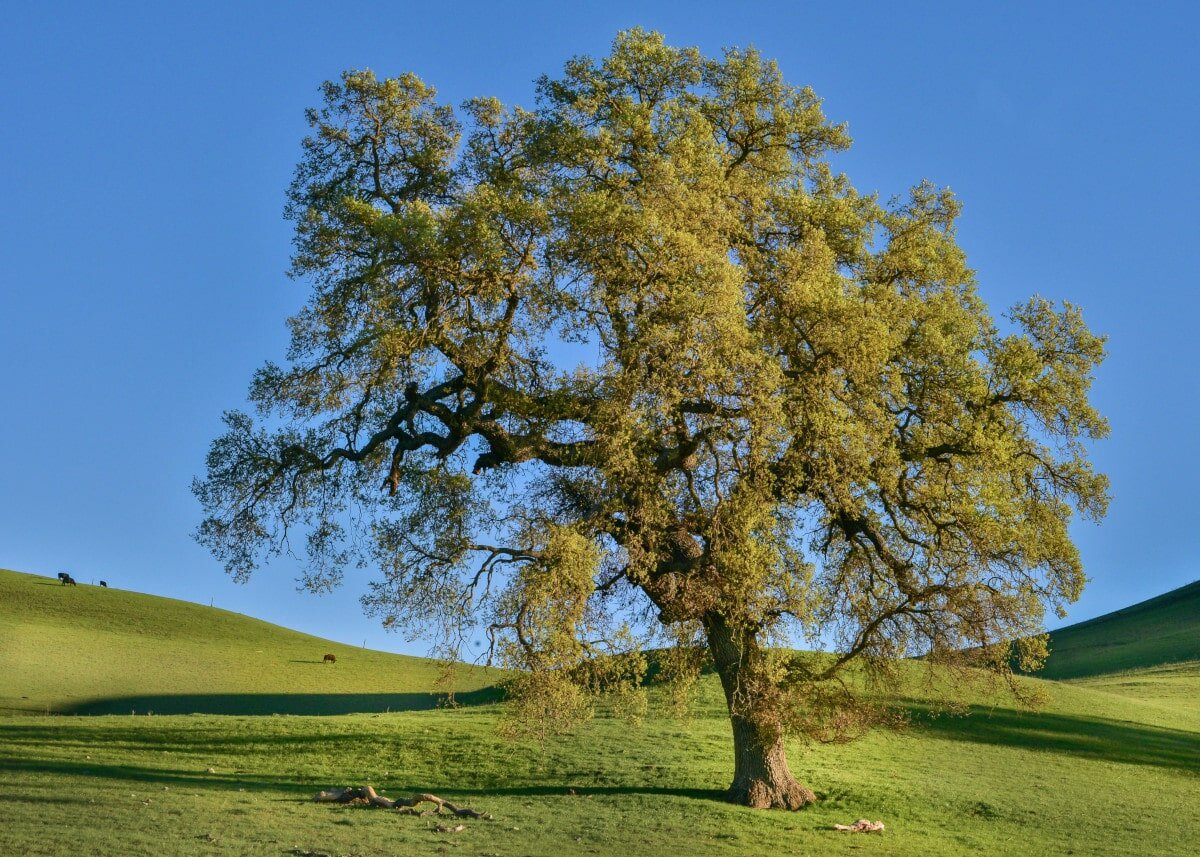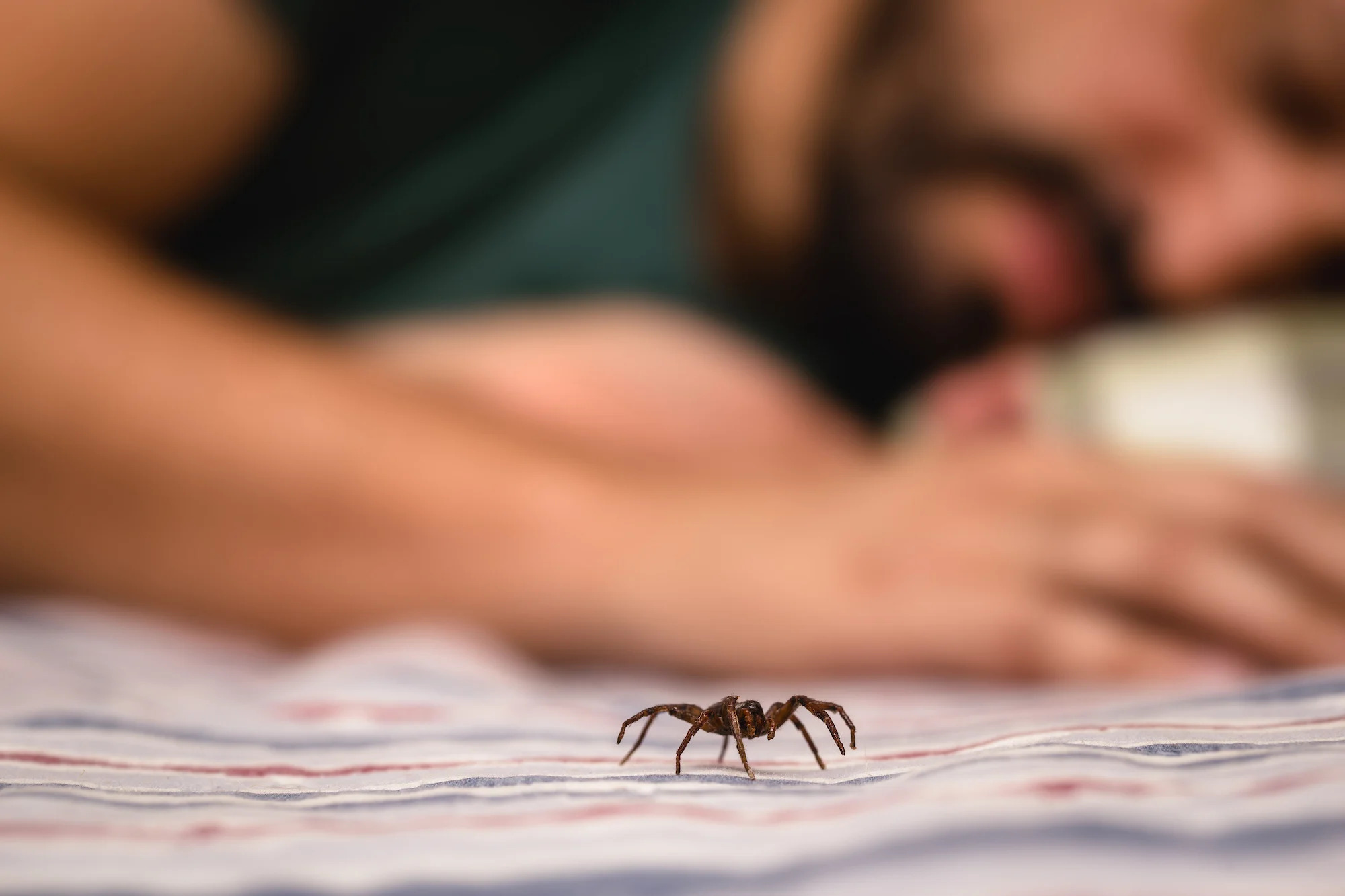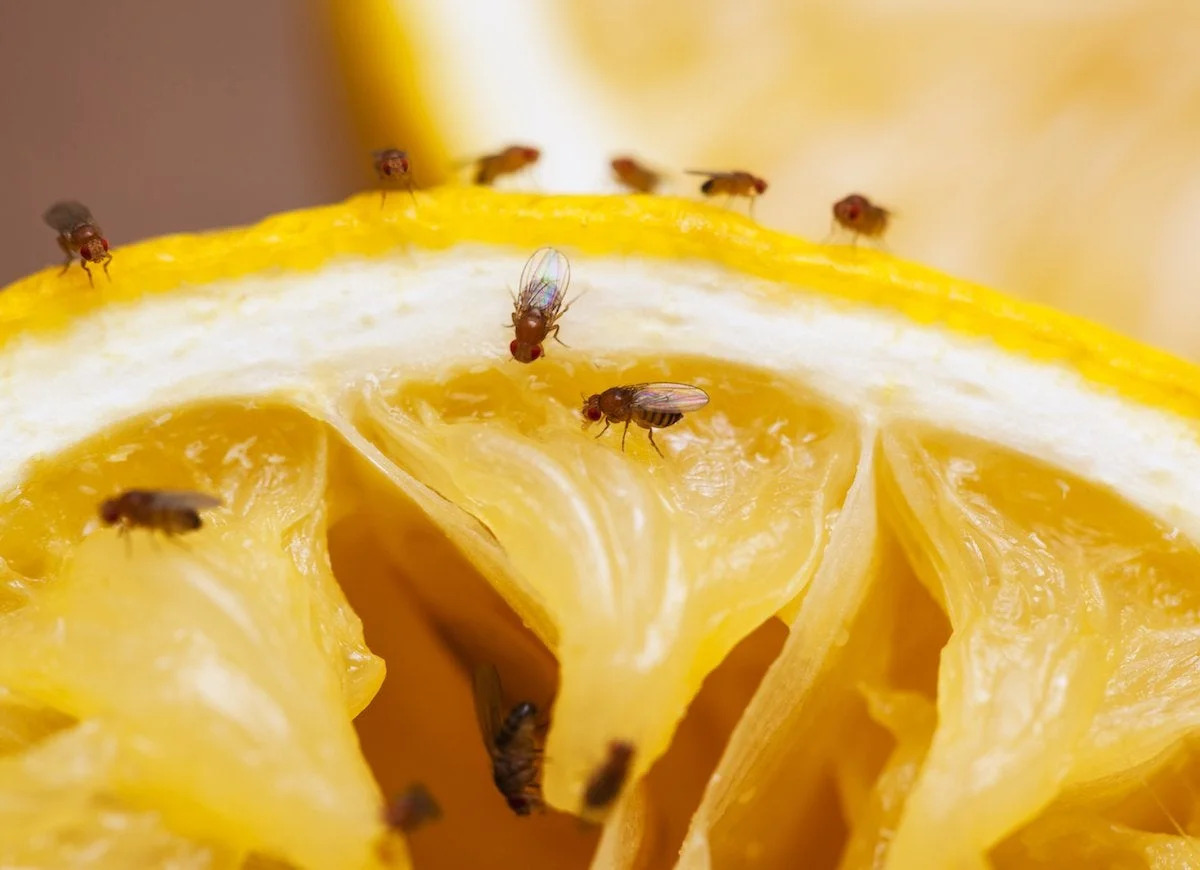Home>Gardening News and Trends>Latest News>How Many Insects In The Amazon Rainforest
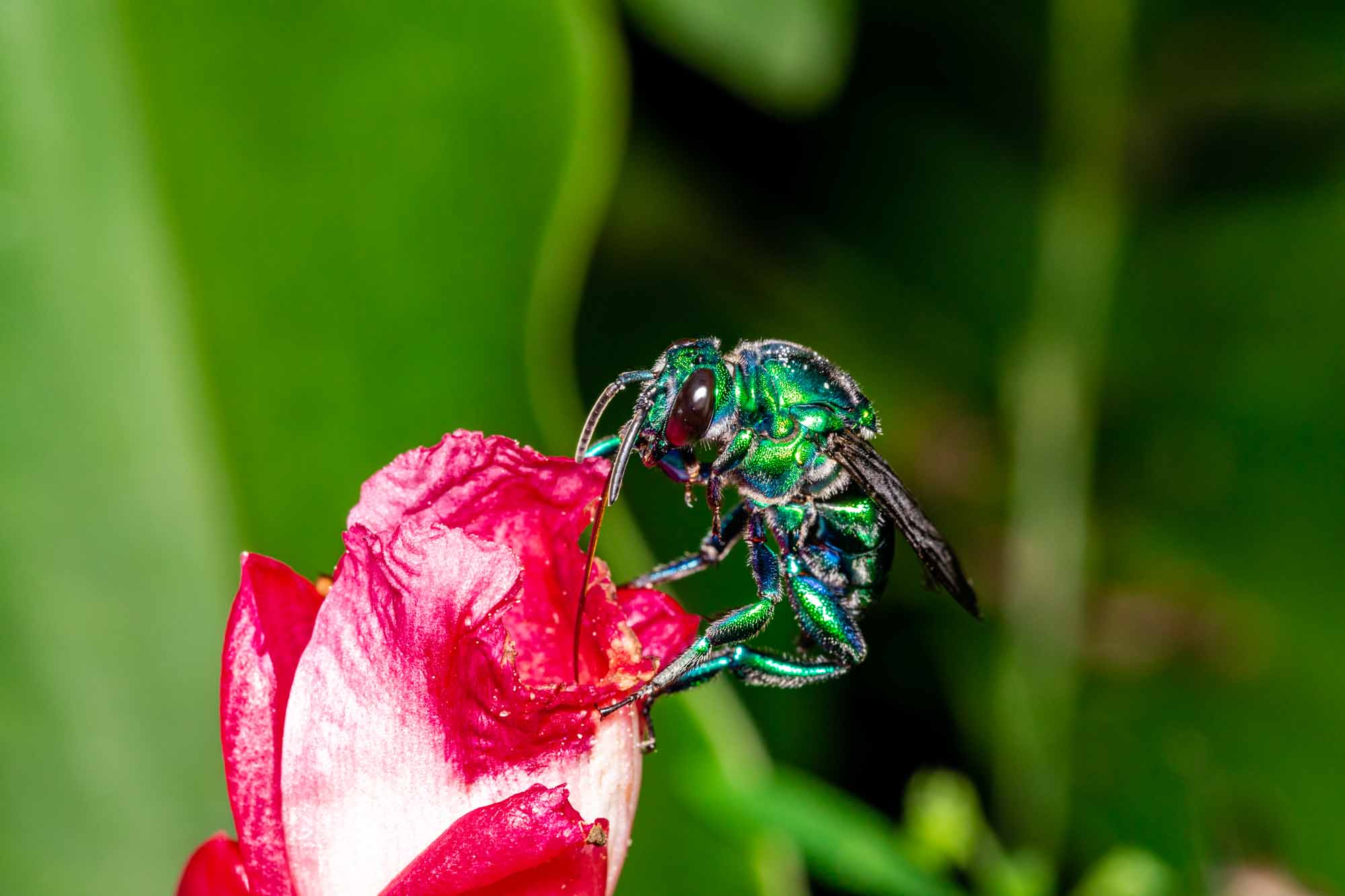

Latest News
How Many Insects In The Amazon Rainforest
Published: December 4, 2023
Discover the latest news on the insect population in the Amazon rainforest, including the fascinating diversity and abundance that exists within this unique ecosystem.
(Many of the links in this article redirect to a specific reviewed product. Your purchase of these products through affiliate links helps to generate commission for Chicagolandgardening.com, at no extra cost. Learn more)
Table of Contents
- Introduction
- Importance of Insects in Ecosystems
- Biodiversity of the Amazon Rainforest
- The Role of Insects in the Amazon Rainforest
- Factors Affecting Insect Populations in the Amazon Rainforest
- Estimating the Number of Insects in the Amazon Rainforest
- Methods Used to Study Insect Populations
- Results and Findings from Insect Studies in the Amazon Rainforest
- Conclusion
- Future Research and Conservation Efforts in the Amazon Rainforest
Introduction
The Amazon Rainforest is one of the most biodiverse places on Earth, teeming with a rich variety of plant and animal species. Amongst this vast array of life, insects play a crucial role in maintaining the delicate balance of the ecosystem. Their importance cannot be overstated, as they contribute to pollination, decomposition, and nutrient cycling.
Insects are the most abundant group of animals in the world, accounting for over two-thirds of all known species. They have adapted to thrive in diverse habitats and are found in almost every corner of the planet, including the Amazon Rainforest. With its immense size and complex ecological systems, the Amazon provides a haven for countless insect species.
Understanding the number of insects in the Amazon Rainforest is a complex task, but it is a critical aspect of studying and conserving this unique environment. Estimating the number of insects can shed light on the overall biodiversity of the rainforest and provide valuable insights into the functioning of the ecosystem.
This article will explore the role of insects in the Amazon Rainforest, factors that affect their populations, methods used to study insect numbers, and the findings from scientific research. By examining these aspects, we can gain a better understanding of the interconnectedness of species in the Amazon Rainforest and the importance of insect conservation.
Importance of Insects in Ecosystems
Insects play a crucial role in maintaining the balance and functioning of ecosystems, including the Amazon Rainforest. Their diverse ecological functions contribute to the overall health and sustainability of the environment.
One of the most significant contributions of insects is pollination. They are responsible for the transfer of pollen between flowers, allowing for the reproduction of flowering plants. In the Amazon Rainforest, where numerous plant species depend on accurate pollination to reproduce, insects act as essential pollinators. Without them, many plant species would struggle to survive, leading to a cascading effect on the entire ecosystem.
In addition to pollination, insects also play a vital role in nutrient cycling and decomposition. They break down dead plant material and organic matter, releasing valuable nutrients back into the soil. This process is crucial for maintaining soil fertility and enabling the growth of new plant life. Insects, such as beetles and termites, are particularly efficient decomposers in the Amazon Rainforest, aiding in the recycling of nutrients and contributing to the overall nutrient balance of the ecosystem.
Furthermore, insects are an essential food source for many animals in the rainforest. They serve as prey for birds, mammals, reptiles, and amphibians, forming the foundation of the food web. Insects provide a reliable and abundant food supply for numerous species, ensuring their survival and contributing to the intricate web of interactions within the ecosystem.
Beyond their ecological functions, insects also have economic and cultural significance. In parts of the Amazon Rainforest, indigenous communities rely on insects for food, medicine, and traditional practices. Insects have also been a source of inspiration for various fields, including art, literature, and technology.
Therefore, the importance of insects in ecosystems, particularly in the Amazon Rainforest, cannot be overstated. They are not only essential for the survival and balance of the ecosystem but also have far-reaching implications for human well-being and cultural heritage.
Biodiversity of the Amazon Rainforest
The Amazon Rainforest is renowned for its unparalleled biodiversity, making it a true treasure trove of life. Spanning nine countries and covering more than 5.5 million square kilometers, it is home to an estimated 10% of the world’s known species. This vast expanse of diverse habitats provides a haven for countless plants, animals, and microorganisms.
The sheer number of species in the Amazon Rainforest is staggering. It is estimated that the region contains around 16,000 tree species, with each hectare potentially harboring more tree species than in all of North America. Similarly, the Amazon is home to approximately 2.5 million insect species, making it a hotspot for insect diversity.
Not only is the Amazon Rainforest abundant in plant and insect life, but it is also home to a myriad of animal species. This includes iconic animals such as jaguars, sloths, macaws, and pink river dolphins. Additionally, the region hosts an extraordinary variety of fish, reptiles, amphibians, and birds, showcasing the incredible richness and complexity of the ecosystem.
Moreover, the Amazon Rainforest is significant in terms of genetic diversity. The diverse array of species in the region offers a wide range of genetic variations and adaptations. This genetic diversity plays a crucial role in the resilience and adaptability of species, allowing them to survive in different environmental conditions and respond to changing landscapes and threats.
Protecting the biodiversity of the Amazon Rainforest is of paramount importance. Not only does it represent a global biological heritage, but it also provides countless ecosystem services that benefit both local communities and the rest of the world. The preservation of this rich biodiversity ensures the stability and productivity of the rainforest, making it crucial for the well-being of both wildlife and humans.
However, the Amazon Rainforest faces numerous threats, including deforestation, habitat fragmentation, climate change, and illegal wildlife trade. These factors endanger the fragile balance of the ecosystem and put countless species at risk of extinction. Efforts to conserve and sustainably manage the biodiversity of the Amazon Rainforest are essential to preserve its ecological integrity and safeguard the future of this unique and irreplaceable natural wonder.
The Role of Insects in the Amazon Rainforest
Insects play a vital role in the functioning and dynamics of the Amazon Rainforest ecosystem. Their diverse functions and interactions contribute to various ecological processes, influencing the overall health and stability of the rainforest.
One of the primary roles of insects in the Amazon Rainforest is pollination. As mentioned earlier, insects are crucial pollinators for many plant species in the rainforest. They transfer pollen between flowers, facilitating the reproduction of plants and the production of fruits and seeds. This process ensures the continuation of plant species and provides a source of food for numerous animals.
Insects also contribute to nutrient cycling and decomposition in the rainforest. They break down dead plant matter and organic material, speeding up the process of decomposition and releasing essential nutrients back into the soil. This nutrient recycling is vital for maintaining soil fertility and ensuring the growth and regeneration of new plant life in the rainforest.
Additionally, insects in the Amazon Rainforest play a pivotal role in seed dispersal. Many plants rely on insects to disperse their seeds to new areas, helping to colonize different habitats and ensure genetic diversity. Insects, such as ants and beetles, carry seeds away from the parent plant and deposit them in different locations, aiding in the dispersal and survival of plant species.
Furthermore, insects form an essential part of the rainforest food chain. They serve as a primary food source for a diverse range of predators, including birds, bats, primates, reptiles, and amphibians. Insects provide a consistent and abundant supply of nutrients for these animals, contributing to their survival and enabling the complex web of predator-prey relationships within the rainforest.
Insects also play a role in controlling populations of other organisms. Some insects act as natural predators of pest species, regulating their populations and preventing outbreaks. For example, certain wasp species are known to parasitize and help control populations of pest insects, reducing the need for chemical pesticides and promoting ecological balance.
Overall, the role of insects in the Amazon Rainforest is multifaceted and essential. They contribute to pollination, nutrient cycling, seed dispersal, and provide a critical food source for countless species. Understanding and conserving the diverse insect populations in the rainforest is crucial for maintaining the health and resilience of this unique ecosystem.
Factors Affecting Insect Populations in the Amazon Rainforest
Various factors can influence the populations and dynamics of insects in the Amazon Rainforest. These factors, both natural and human-induced, can have significant impacts on insect biodiversity and abundance within the ecosystem.
One of the primary natural factors affecting insect populations is climate. The Amazon Rainforest experiences high temperatures and high humidity year-round, creating a suitable environment for many insect species. However, climate change can disrupt this delicate balance. Rising temperatures, altered precipitation patterns, and increased extreme weather events can directly impact insect reproduction, behavior, and distribution. These changes can lead to shifts in insect populations and even extinction of vulnerable species.
Habitat loss and degradation are major human-induced factors that profoundly influence insect populations. The expansion of agriculture, logging, and infrastructure development in the Amazon Rainforest has resulted in widespread deforestation and fragmentation of habitats. This destruction disrupts the natural habitats of many insect species, leading to population declines and increased vulnerability to extinctions.
Pesticide use in agriculture also poses a significant threat to insect populations. Insecticides, herbicides, and fungicides are commonly used to control pests and diseases in crops. However, these chemicals can have unintended consequences, resulting in the direct killing of beneficial insects or disrupting their natural behaviors and life cycles. This can have cascading effects on the entire ecosystem, affecting pollination, decomposition, and the overall balance of the rainforest.
Invasive species pose another challenge for insect populations in the Amazon Rainforest. Non-native species introduced to the region can outcompete native insects for resources or prey upon them, leading to population declines. Invasive plants can also disrupt ecological interactions and reduce suitable habitat for native insects, further impacting their populations.
Finally, pollution and climate change-related factors, such as increased air and water pollution and the spread of diseases, can negatively impact insect populations. Pollution can directly harm insects, impair their reproductive capabilities and weaken their immune systems, making them more susceptible to diseases.
Understanding and mitigating these factors are crucial for the conservation of insect populations in the Amazon Rainforest. Conservation efforts need to focus on protecting and restoring habitats, promoting sustainable agriculture practices, reducing pesticide use, and addressing climate change. By addressing these factors, we can help maintain the delicate balance of insect populations and safeguard the diverse and intricate ecology of the Amazon Rainforest.
Estimating the Number of Insects in the Amazon Rainforest
Estimating the exact number of insects in the Amazon Rainforest is a challenging task due to the sheer complexity and vastness of the ecosystem. However, scientists employ various methods and techniques to approximate the insect populations and gain insights into the incredible biodiversity of the rainforest.
One approach used to estimate insect numbers is through systematic sampling. Scientists set up sampling sites in different locations throughout the rainforest and collect insects using standardized methods, such as sweep nets, traps, or light traps. By extrapolating the data from these samples, researchers can estimate the number of insects in a given area.
Another technique is DNA barcoding. This method involves collecting and identifying specimens based on their unique DNA sequences. By analyzing the DNA of a large number of samples, scientists can estimate the total number of insect species present in the rainforest. However, DNA barcoding does not provide precise population numbers but rather focuses on species diversity.
Additionally, researchers use mark and recapture studies to estimate insect populations. This involves capturing a sample of insects, marking them in a way that does not harm them, and then releasing them back into the rainforest. Later, a second capture is conducted, and the number of marked individuals within the new sample is recorded. By analyzing the ratio of marked to unmarked insects, scientists can estimate the total population size.
Remote sensing technologies, such as satellite imagery and aerial surveys, also provide valuable information about insect populations. By monitoring vegetation patterns and habitat suitability, scientists can infer the presence and abundance of insects based on their ecological preferences. This method provides a broader-scale assessment of insect populations across the rainforest.
It is important to note that all estimation methods have limitations and uncertainties. The vastness and complexity of the Amazon Rainforest make it impossible to obtain an exact count of insects. Additionally, insect populations can fluctuate throughout the year due to seasonal variations and other ecological factors.
Nevertheless, these estimation techniques, when combined and analyzed collectively, provide valuable insights into the immense diversity and ecological roles of insects in the Amazon Rainforest. They help scientists understand the intricate interrelationships between insects and their environment, guiding conservation efforts and highlighting the importance of protecting this unique ecosystem.
Methods Used to Study Insect Populations
Studying insect populations in the Amazon Rainforest requires a combination of fieldwork, laboratory analysis, and advanced technologies. Scientists employ various methods and techniques to gain insights into the diversity and abundance of insects in this complex and diverse ecosystem.
One of the most common methods used is field sampling. Scientists set up collection sites in different habitats and collect insects using a range of techniques, such as sweep nets, malaise traps, pitfall traps, and light traps. These methods allow for the capture and collection of a wide range of insect species across different habitats and elevations.
In addition to physical collection, behavioral observations are important in studying insect populations. Researchers observe insect behavior in their natural habitat, noting feeding patterns, mating behaviors, and interactions with other organisms. Such observations provide valuable insights into the ecological functions and relationships of insects within the rainforest ecosystem.
Molecular techniques are also utilized to study insect populations. DNA analysis, including DNA barcoding, allows scientists to identify different insect species and their genetic diversity. This method provides a deeper understanding of the evolutionary relationships and genetic variations within insect populations in the Amazon Rainforest.
Remote sensing technologies, such as satellite imagery and aerial surveys, are also used to study insect populations on a larger scale. These technologies provide information on vegetation patterns, landscape structure, and habitat suitability, which are vital in understanding the distribution and abundance of insects across the rainforest.
Climate monitoring is another important method. Scientists use weather stations, data loggers, and satellite data to monitor temperature, humidity, and precipitation in the rainforest. This data helps understand how climatic factors influence insect populations, including their life cycles, reproduction, and overall distribution.
Collaboration with indigenous communities and local knowledge is also essential in studying insect populations. Indigenous peoples have a deep understanding of the rainforest and its inhabitants, including insects. Their knowledge and traditional practices can provide important insights into the behavior, distribution, and ecological roles of insects.
Combining these various methods and approaches allows scientists to obtain a comprehensive understanding of insect populations in the Amazon Rainforest. The integration of fieldwork, laboratory analysis, advanced technologies, and local knowledge helps uncover the intricate dynamics and ecological functions of insects within this unique and biodiverse ecosystem.
Results and Findings from Insect Studies in the Amazon Rainforest
Studies conducted in the Amazon Rainforest have revealed fascinating and important findings about the diverse insect populations that inhabit this biodiverse ecosystem. These results contribute to our understanding of insect ecology, biodiversity, and the interconnectedness of species within the rainforest.
One remarkable finding is the sheer number of insect species in the Amazon Rainforest. It is estimated that the rainforest is home to around 2.5 million insect species, showcasing the incredible diversity and abundance of insect life in this region. This rich variety of species includes charismatic insects like colorful butterflies, beetles, ants, and bees.
Research has also shed light on the ecological roles of insects within the rainforest. Pollination studies have revealed the intricate relationships between insects and plants, highlighting the crucial role insects play in plant reproduction and ecosystem stability. Insects are responsible for pollinating a wide variety of plants, ensuring the survival and diversity of many tree and plant species in the rainforest.
Insect studies have also provided insights into the role of insects in nutrient cycling and decomposition processes. Researchers have found that diverse groups of insects, such as beetles, termites, and ants, play a vital role in breaking down dead plant material and organic matter. Their activity releases valuable nutrients back into the soil, contributing to soil fertility and supporting the growth of new vegetation.
Furthermore, insect studies have identified new and endemic species in the Amazon Rainforest. Scientists have documented previously unknown species of beetles, butterflies, ants, and other insect groups. These discoveries highlight the importance of continued research and conservation efforts to protect and preserve the unique biodiversity of the rainforest.
Researchers have also uncovered the interactions and interconnectedness between insects and other organisms in the rainforest. Insect studies have revealed complex predator-prey relationships, parasite-host interactions, and mutualistic partnerships between insects and plants or fungi. Understanding these ecological relationships is crucial for recognizing the delicate balance of the rainforest ecosystem.
Additionally, insect studies have highlighted the impacts of human activities on insect populations. Research has shown that deforestation, habitat fragmentation, pesticide use, and climate change have detrimental effects on insect biodiversity and abundance in the Amazon Rainforest. These findings emphasize the urgent need for sustainable land-use practices and ecosystem protection to safeguard insect populations and the overall health of the rainforest.
In summary, insect studies in the Amazon Rainforest have provided valuable insights into the incredible diversity, ecological roles, and vulnerability of insect populations. They highlight the importance of insects for pollination, nutrient cycling, and maintaining the delicate balance of the rainforest ecosystem. Continued research and conservation efforts are crucial to preserve the unique biodiversity of the Amazon Rainforest and ensure the survival of its fascinating insect inhabitants.
Conclusion
The insects of the Amazon Rainforest play a vital and multifaceted role in maintaining the intricate balance of this remarkable ecosystem. From pollination and nutrient cycling to seed dispersal and serving as a food source for other organisms, insects are integral to the functioning and health of the rainforest.
The incredible biodiversity of the Amazon Rainforest is evident in its diverse insect populations. With an estimated 2.5 million species, insects thrive in a variety of habitats, displaying a wide range of ecological functions and interactions.
However, the Amazon Rainforest faces numerous threats that put insect populations at risk. Habitat loss, climate change, pesticide use, invasive species, and pollution are all factors that impact insect biodiversity and abundance. These challenges highlight the urgency of conservation efforts to protect the fragile balance of the rainforest ecosystem and preserve its invaluable insect inhabitants.
Through fieldwork, laboratory analysis, and the use of advanced technologies, scientists have made significant strides in understanding insect populations in the Amazon Rainforest. Their studies have yielded fascinating findings about insect biodiversity, ecological roles, and interrelationships. These findings contribute to our broader understanding of the rainforest ecosystem and emphasize the need for its conservation.
Continued research and monitoring are essential to monitor changes in insect populations and further unravel the complexities of their ecological functions. Furthermore, collaboration with local communities, indigenous peoples, and policymakers is crucial to develop sustainable strategies for the conservation and management of the Amazon Rainforest.
The protection of insect populations in the Amazon Rainforest is not only important for the health and stability of the ecosystem but also for the well-being of humanity. Insects contribute to pollination, nutrient cycling, and the overall functioning of the rainforest, providing essential ecosystem services that benefit both wildlife and humans.
Preserving the biodiversity of the Amazon Rainforest, including its incredible insect diversity, is a global responsibility. It is through the collective efforts of scientists, policymakers, local communities, and individuals around the world that we can ensure the sustainable future of this unique and invaluable ecosystem.
Future Research and Conservation Efforts in the Amazon Rainforest
The Amazon Rainforest continues to be a subject of extensive research and conservation efforts due to its unparalleled biodiversity and ecological significance. As we strive to protect this unique ecosystem, future research and conservation initiatives will play a crucial role in ensuring its long-term sustainability.
One key area for future research is understanding the impacts of climate change on insect populations in the Amazon Rainforest. The changing climate poses significant challenges to the survival and behavior of insects, affecting their interactions with plants, reproduction patterns, and overall distribution. Studying these effects will provide valuable insights into the potential consequences for the rainforest ecosystem and enable targeted conservation strategies.
Exploring the genetic diversity of insect populations in the Amazon is also an important avenue for future research. Genetic studies can help identify population structures, migration patterns, and adaption capabilities. This knowledge can inform conservation efforts, as it provides insights into how populations may respond to environmental changes and how to prioritize conservation actions.
In addition, continued research into the ecological roles of insects in the rainforest will deepen our understanding of their contributions to ecosystem processes. Investigating the specific interactions between insects and plants, as well as the consequences of their absence or decline, can help identify critical links in the web of life and guide conservation efforts to protect these vital connections.
Beyond research, conservation efforts in the Amazon Rainforest must prioritize habitat protection and restoration. Implementing policies and practices that prevent deforestation, limit habitat fragmentation, and promote sustainable land use is essential for preserving insect populations and overall biodiversity. Collaborating with local communities and indigenous peoples, who have deep knowledge and connections to the rainforest, is crucial for successful conservation strategies.
Education and public awareness initiatives are also important for promoting the value of the Amazon Rainforest and its insect inhabitants. By raising awareness about the ecological importance of insects and the threats they face, we can foster a deeper appreciation and inspire individuals to take action to protect this unique ecosystem.
International cooperation is vital for the future of the Amazon Rainforest. Collaborative efforts between governments, scientific institutions, non-governmental organizations, and local communities are necessary to implement effective conservation measures, share research findings, and develop sustainable management practices that balance ecological integrity with socio-economic needs.
By advancing research, implementing robust conservation measures, and fostering collaborations, we can ensure the future well-being of the Amazon Rainforest and its invaluable insect populations. Protecting the rainforest is not only essential for preserving the biodiversity hotspot but also for the global climate, as the Amazon plays a critical role in mitigating climate change and maintaining the planet’s ecological equilibrium.
